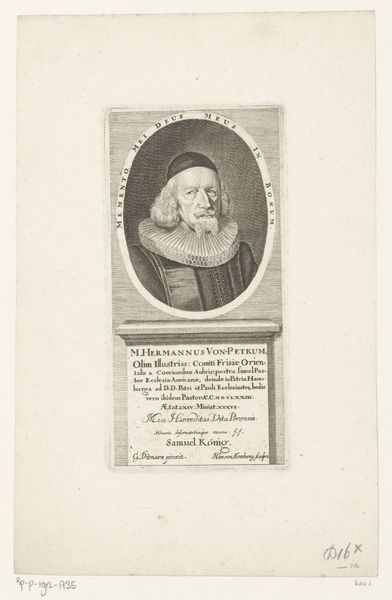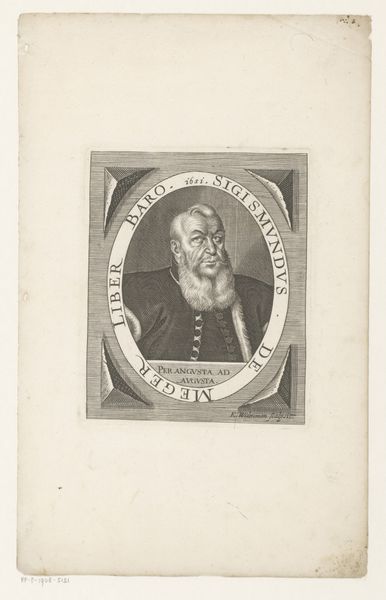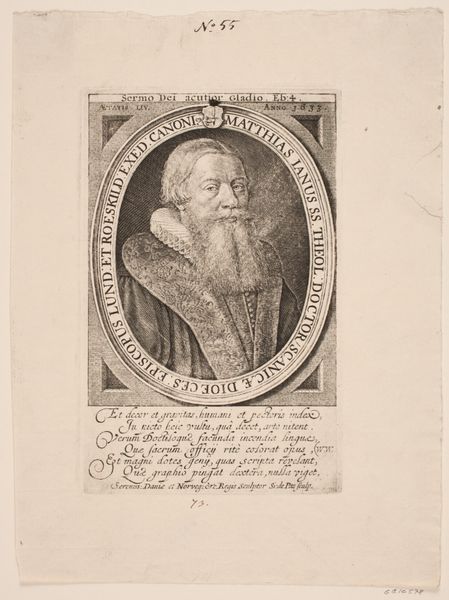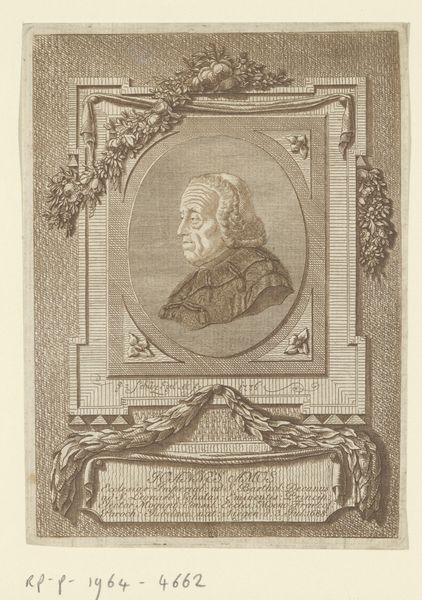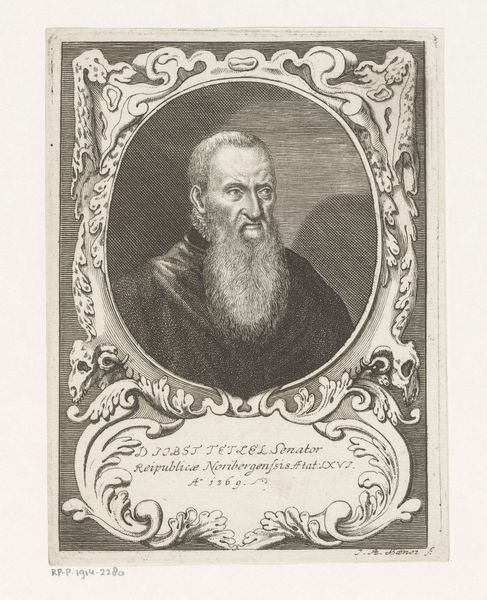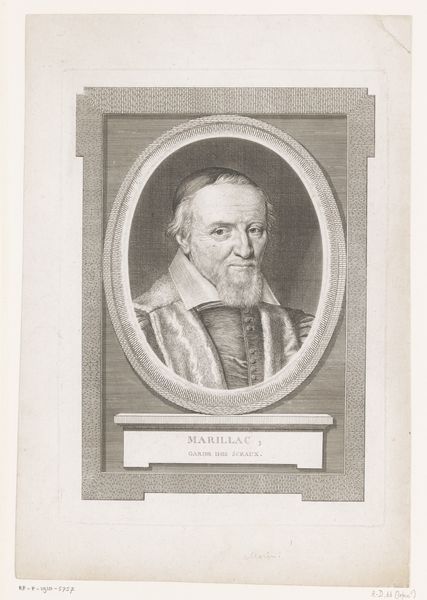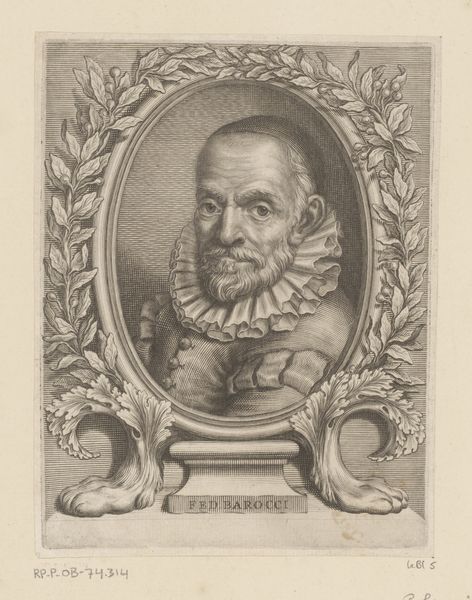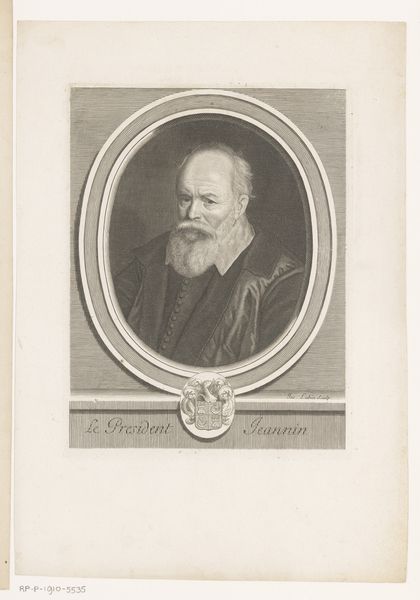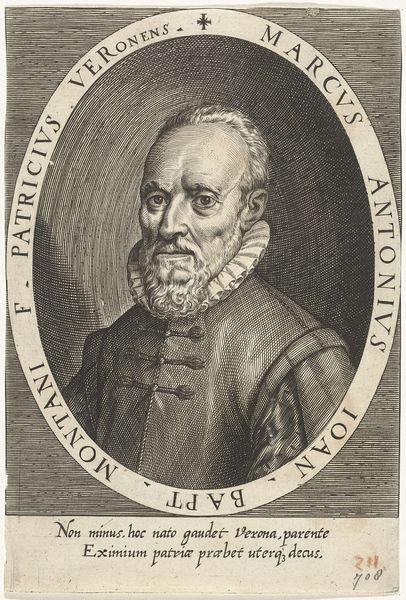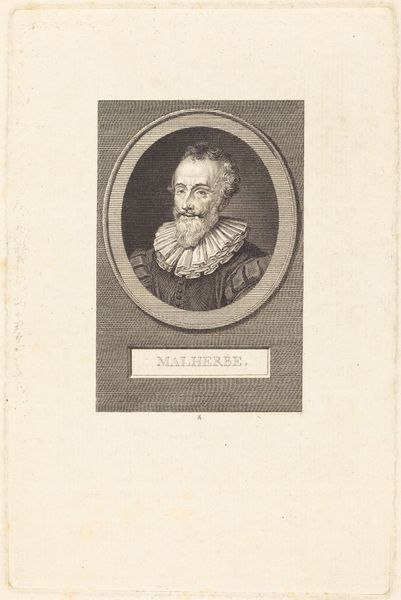
print, engraving
#
portrait
#
neoclassicism
# print
#
old engraving style
#
history-painting
#
engraving
Dimensions: height 121 mm, width 90 mm
Copyright: Rijks Museum: Open Domain
Curator: Let's delve into this striking engraving, "Portret van Jean Im-Thurn" created by François Hubert in 1784. The print is held here at the Rijksmuseum. Editor: My immediate impression is one of formal austerity. The starkness of the engraving technique, the confined oval frame… it suggests a world dictated by social structure. Curator: Indeed. Hubert crafted this piece using engraving, a meticulous process that reflects the Neoclassical interest in precision and detail. Beyond just the art form itself, consider the role these portraits played in solidifying social standing. They communicated the power dynamics of the period and who deserved recognition. Editor: So, more than just likeness, this is about creating a historical document – a kind of social media of the era if you will. Curator: Precisely. Jean Im-Thurn was, as the print indicates, a "Chevalier", and the text underneath his portrait goes on to indicate the year and location of his passing, a key part of solidifying the importance of his social standing for posterity. Hubert would have likely intended his prints to be widely distributed, a visible reminder of Im-Thurn's lineage. What message does the subject's specific attire convey? Editor: That ruffled collar – a signifier of wealth and status. A subtle act of rebellion perhaps with the thin chains? How do we read this against other societal restrictions placed on people, in regards to race, or gender? Curator: That's where the power of art history and contemporary theory meet. By placing this print within its broader context— the late 18th century and all of its societal structures – we can read into a lot about societal and individual expression through presentation of self. Editor: Engaging with artworks like this pushes us to understand the layered intentions behind images. It isn't just aesthetics but also who art speaks to, who can represent what, and to what end? Thank you, this has shifted my perspective. Curator: Always a pleasure when the past helps to challenge the present.
Comments
No comments
Be the first to comment and join the conversation on the ultimate creative platform.
